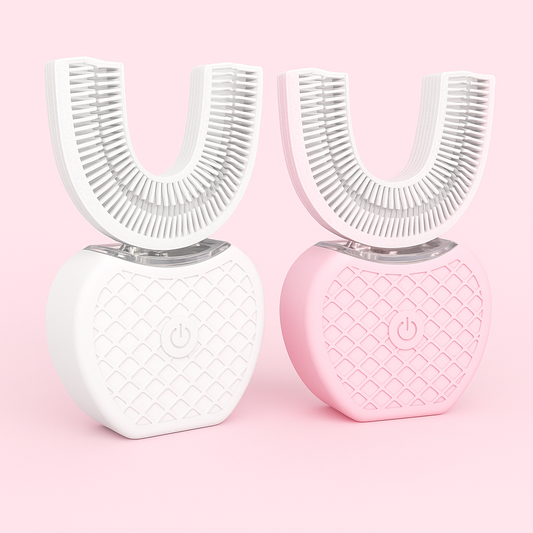Introduction
Fresh breath in dogs is a hallmark of good health and a happy pet. However, many dog owners struggle with unpleasant odors coming from their furry friends’ mouths. Bad breath, also known as halitosis, can be more than just a nuisance—it often signals underlying dental or health issues. As we advance into 2025, pet care continues to evolve with innovative methods and products designed to improve canine oral hygiene effectively and safely.
In this comprehensive guide, we delve into the top 8 proven ways to achieve long-lasting fresh breath for dogs. Whether you have a puppy or an older dog, these tips will help you maintain your pet’s oral health, increase their comfort, and strengthen your bond through better care.
1. Regular Dental Checkups and Professional Cleanings
One of the most important steps to keeping your dog’s breath fresh is scheduling regular veterinary dental checkups. Veterinarians can identify early signs of dental disease that aren't visible to the naked eye, such as gingivitis, periodontal disease, and oral infections. Professional dental cleanings performed under anesthesia allow thorough removal of plaque and tartar, especially below the gum line where bacteria thrive.
Why it matters: Untreated dental problems can lead to chronic bad breath and more serious issues like tooth loss, pain, and systemic infections affecting the heart, liver, and kidneys.
Tip: Most vets recommend dental checkups and cleanings annually, but dogs prone to dental disease may require more frequent visits.
2. Daily Brushing with Dog-Specific Toothpaste
Brushing your dog’s teeth remains the gold standard for maintaining oral hygiene at home. Using a toothbrush and toothpaste formulated specifically for dogs is essential because human toothpaste contains fluoride and other ingredients toxic to dogs.
How to brush effectively:
- Choose a soft-bristled toothbrush designed for dogs or a finger brush for better control.
- Introduce brushing gradually, rewarding your dog to create a positive association.
- Brush gently in circular motions, focusing on the gum line where plaque accumulates.
- Aim to brush at least 3-4 times per week, with daily brushing being ideal.
Consistent brushing disrupts plaque formation and reduces bad breath by eliminating bacteria.
3. Providing Dental Chews and Toys
Chewing is a natural behavior that helps dogs mechanically clean their teeth. Dental chews and specially designed toys can assist in reducing plaque and freshening breath.
What to look for:
- Products approved by veterinary dental associations (such as the Veterinary Oral Health Council - VOHC).
- Chews made with safe, digestible ingredients that promote saliva production.
- Toys with textured surfaces that scrub teeth effectively.
In addition to cleaning benefits, dental chews satisfy your dog's need to chew and prevent boredom.
4. Incorporating a Balanced Diet for Oral Health
Your dog’s diet plays a crucial role in oral hygiene. Some high-quality commercial dog foods are formulated to reduce plaque buildup through kibble texture or added ingredients.
Dietary tips include:
- Avoid sugary or sticky treats that can adhere to teeth and promote bacterial growth.
- Consider dental-specific diets recommended by veterinarians that help minimize tartar formation.
- Include fresh vegetables like carrots or apple slices (in moderation and safe for dogs) as natural teeth cleaners and breath fresheners.
Feeding your dog a balanced, nutritious diet supports immune health, which in turn helps fight oral infections.
5. Using Oral Rinses and Water Additives
Oral rinses and water additives designed for dogs are convenient ways to reduce oral bacteria and maintain fresh breath. These products typically contain ingredients like chlorhexidine, zinc compounds, or natural enzymes that inhibit bacterial growth.
Benefits:
- Easy to administer without the need for brushing.
- Can reduce plaque and tartar buildup when used consistently.
- Helps reach areas that are difficult to brush.
Important: Always choose products formulated specifically for dogs and follow dosage instructions carefully. Consult your vet before starting new oral care products.
6. Ensuring Proper Hydration
Water is a natural cleanser for the mouth. Keeping your dog well-hydrated aids in flushing away food particles and bacteria that cause bad breath. Additionally, saliva production increases with hydration, helping maintain a healthy oral environment.
Hydration tips:
- Provide fresh, clean water at all times.
- Clean water bowls daily to prevent bacterial buildup.
- Consider adding pet-safe water enhancers if your dog is a picky drinker (consult your vet first).
7. Natural Remedies and Supplements
Many pet owners explore natural options to enhance their dog’s oral health. Certain herbs and oils have breath-freshening properties and can be safely incorporated into your dog’s care routine.
Popular natural remedies include:
- Parsley: Known for its freshening effects, parsley can be added in small amounts to your dog’s food.
- Coconut oil: Contains antimicrobial properties and can be applied to the gums or added to food.
- Enzyme supplements: These help break down odor-causing compounds and reduce plaque formation.
- Probiotics: Support oral and digestive health, potentially reducing bad breath.
Consult your veterinarian before starting any supplements to ensure they are safe and appropriate for your dog.
8. Monitor and Address Underlying Health Issues
Persistent bad breath despite good oral care may indicate underlying health problems such as:
- Kidney disease: Can cause a distinct ammonia-like odor.
- Diabetes: May result in a sweet or fruity breath smell.
- Gastrointestinal issues: Can contribute to oral odor.
- Oral tumors or infections: May cause localized bad breath.
Regular veterinary examinations help detect these conditions early. Prompt diagnosis and treatment are key to improving your dog’s breath and overall health.
Bonus Tips for Maintaining Fresh Breath
- Introduce oral care early: Start dental hygiene routines when your dog is a puppy to build tolerance.
- Use positive reinforcement: Reward your dog during and after oral care to encourage cooperation.
- Avoid harmful habits: Discourage chewing on hard objects like rocks or sticks that can damage teeth.
- Maintain a clean environment: Regularly wash bedding and toys to reduce bacteria exposure.
Conclusion
Achieving and maintaining long-lasting fresh breath for your dog in 2025 is achievable with a combination of professional care, consistent home hygiene, proper nutrition, and attention to overall health. By implementing these eight proven strategies, you not only improve your dog’s breath but also enhance their quality of life and happiness.
Remember, fresh breath is just one indicator of your dog’s health. Always consult your veterinarian for personalized advice and to address any concerns about your pet’s oral or general health. With dedication and the right approach, you can enjoy many years of joyful companionship with your dog, free from the worry of bad breath.


